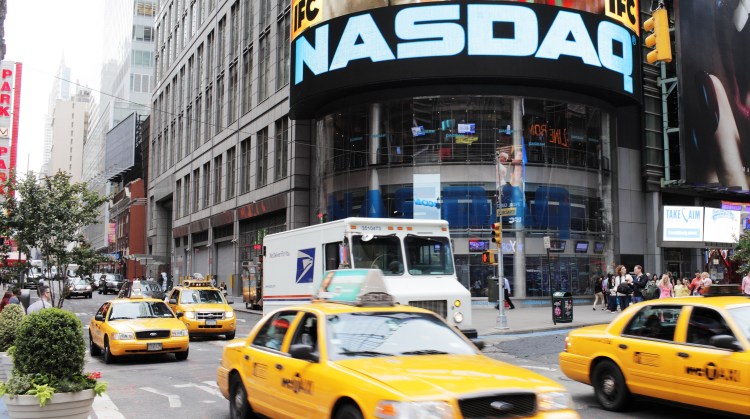After months of quietly climbing higher and higher, tech stocks began to tumble Friday, with the Nasdaq Composite falling as much as 2.8 percent during mid-day trading.
More disconcertingly, the selloff hit hardest some of the largest-cap and best-known names in tech. Microsoft fell as much as 4.6 percent, while Alphabet and Facebook lost as much as 5 percent. Amazon fell as much as 5.3 percent, Apple 5.6 percent, and Netflix 6.5 percent.
Such declines aren’t unheard of in the history of technology stocks, which have a long record of volatile performances because of their focus on growth and the cyclical nature of the industry. But the selloff was notable not only for its sudden onset but also because most of these stocks have seen low volatility for much of the past year, as they quietly edged to record highs.
In the past 12 months through yesterday, the Nasdaq Composite had gained 30 percent, while share prices of the six tech giants mentioned above have risen between 30 percent and 71 percent in that period without a sustained selloff. Shares of Google and Amazon both surpassed the $1,000 mark recently and seemed to hit a new record high each week. Both closed today below $1,000.
June 5th: The AI Audit in NYC
Join us next week in NYC to engage with top executive leaders, delving into strategies for auditing AI models to ensure fairness, optimal performance, and ethical compliance across diverse organizations. Secure your attendance for this exclusive invite-only event.
The sudden declines may reverse themselves soon enough, but that they came out of nowhere without a single, overriding catalyst suggests a possible shift in investor mindset from placidly bullish to cautiously bearish. According to Goldman Sachs, investments in Alphabet, Amazon, Apple, Facebook, and Microsoft have collectively added $600 billion in market cap this year, accounting for 40 percent of the S&P 500’s positive performance.
Nonetheless, signs that investors were growing uneasy have been evident in recent days. Janus Capital’s Bill Gross said Wednesday he believed market risk was at its highest point since the eve of the 2008 financial crisis. Jim Rogers, chairman of Rogers Holdings, predicted yesterday a market crash that would rival anything he’s seen in his lifetime. The cautionary comments came amid concern that President Donald Trump’s agenda, seen by Wall Street as a positive, is beginning to stall.
Along with their record high stock prices, technology companies have reached valuations that seem priced for perfection. Beginning next month, as they report second-quarter earnings, nearly all upside from positive surprises seems to have been already baked in.
Earlier today, Cloudera reported its first earnings since its well-received IPO, beating analyst expectations on revenue and profit. But after Cloudera said operating expenses tripled, the stock plunged 16 percent. That echoed the 25-percent selloff that Snap suffered following its first post-IPO earnings report. Snap has become the most heavily shorted stock so far this year, according to Bloomberg.
By the official close today, Nasdaq had recovered somewhat and then declined again, ending the day down 1.8 percent at 6,207.92.
Again, the volatility today may be just a return to normalcy for a market sector that hasn’t seen much volatility for a while. Or it could be that investors are paring back their exposure in tech to guard against further declines. Regardless, the sudden drop in share prices of the tech giants isn’t something to shrug off — it bears close watching. Collectively, investors pulled more than $100 billion out of six widely owned tech stocks in a matter of hours today. If that’s not a tipping point, it suggests some partygoers are wanting to know where the exits are located.


